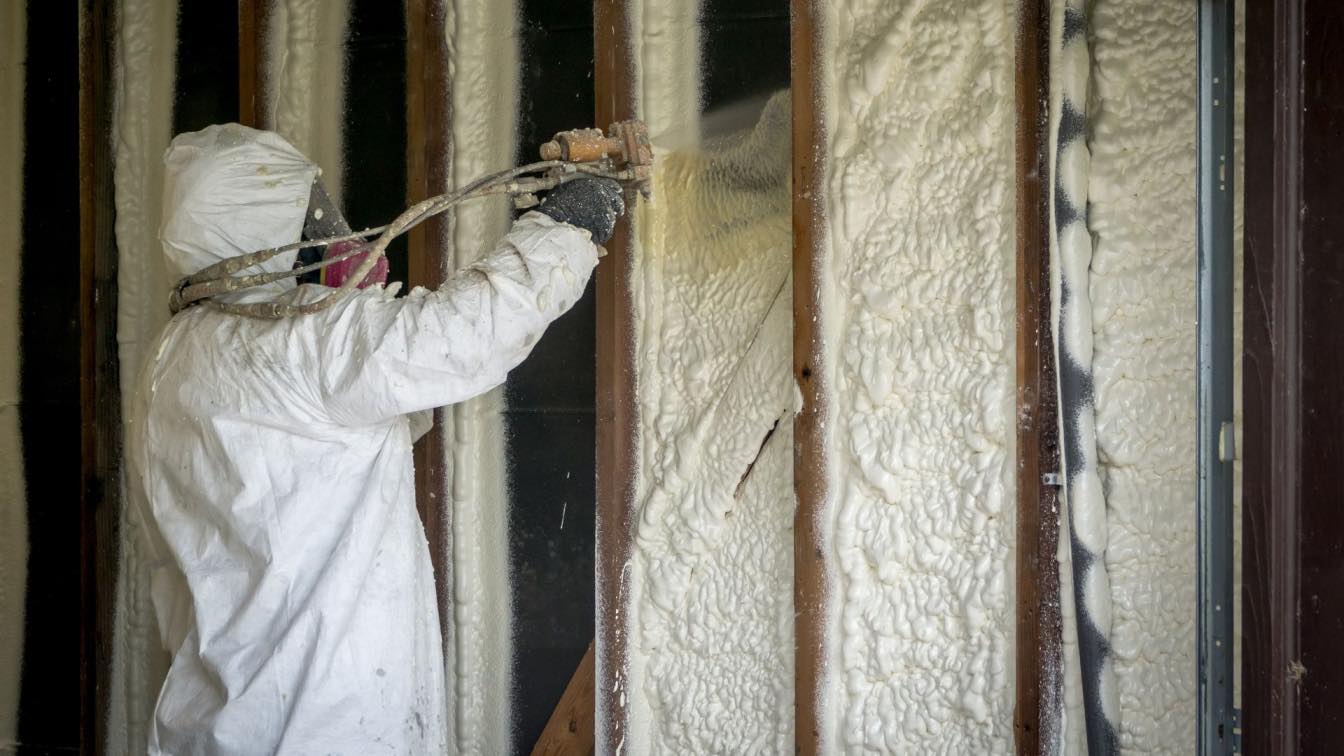There are so many insulation options on the market, so how do you decipher which is best for your home? Which is going to yield the best results? One way is by becoming more knowledgeable about the different types. This blog post is going to focus on spray foam insulation. Continue reading to understand more about spray foam insulation.
Learning About Spray Foam Insulation
Spray foam insulation is a combination of polyol resin and isocyanate. These two materials come together through a high-pressure output system that heats, balances, and mixes the components. The two materials stay separated until the spray foam professional sprays them into the attic, walls, or other crevices because once they combine, they become activated.
It’s an air barrier and insulation material that tightly seals floors, ceilings, and wall cavities. This sealing protects your home or business from air movement. Professionals will also apply spray foam insulation to seal off the areas around light fixtures and electrical outlets.
Anywhere there is an open area in your home, a spray foam professional can apply the insulation. This application is especially true for new builds. Technicians can easily apply spray foam insulation to rim joists, attics, and crawl spaces during the building process. People who are building their new houses or renovating them like to buy high-quality spray foam insulation kits that offer durability and ease of application, ensuring long-lasting protection. These kits not only provide excellent thermal insulation but also contribute to energy savings over time.
One excellent pro about spray foam insulation is that it doesn’t lose shape. Unlike other insulation materials, it grows to fill crevices, cracks, and gaps, and it won’t sag.
Types of Spray Foam
There are two primary types of spray foam insulation: open-cell and closed-cell. What are the differences between the two? Open-cell spray foam is more expandable because the cells are more open. The foam contains air bubbles, and it’s not water-resistant. Open-cell spray foam is the least expensive option, but it provides sufficient sound dampening and temperature control.
Closed-cell spray foam is the more expensive but more efficient spray foam option. The cells tightly interlock to create a superior barrier. It also keeps out allergens and annoying pests and provides water resistance, meaning you won’t need to worry about mold or mildew growing on the insulation.
Take the time to decide between the two because you want to choose the right insulation for your home. If not, you could end up having to update the insulation. Any spray foam insulation contractors with years of experience can help you decide which spray foam best suits your house.
Final Spray Foam Insulation Thoughts
Understanding spray foam insulation will help you discover why many homeowners choose it over other insulation options. It will also lower your energy bills and create a more eco-friendly home. What’s not to love about that?





